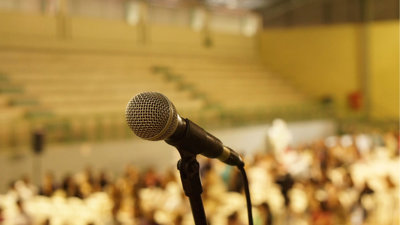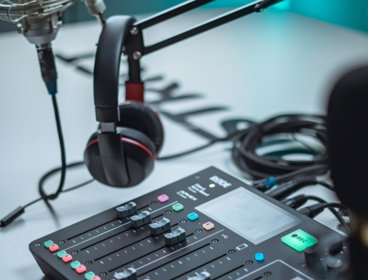By Hayden Lorimer, University of Edinburgh
I should describe my own relationship with radio to begin. It’s the soundtrack I choose for so many ordinary aspects of life. At home while working and cooking, during journeys, when out walking the dog. And since, just like him, I am a creature of habit, scheduled programming continues to serve as a comforting backdrop for the unrolling day. But when radio is at its most arresting and intense, I know it more like a state of mind. The most memorable programmes and features are those that demand repeat listening. Not only to re-enter a world of sound, but because there are technical pleasures to be taken, in listening closer, hanging on every word, and asking myself: “What’s happening here?”; “How is this story being shaped?”; “Who’s points of view are we hearing?”; “What role does the presenter have?”; “Where is this feature taking us?”. Questions like these, about the art and craft of making radio, have given shape to a handful of programmes where the voice behind the mic happens to be mine, and the ideas presented originate in my writing and research.
For many in the research community, the chief appeal in a radio appearance will, of course, be its effectiveness as an explanatory medium: to cast new knowledge broadly, to report on breakthrough findings, and to pair up arguments with evidence. A schooling in science communication and media training are what matter here, ensuring geographical research can be reported clearly and impactfully, and that the exercise of translation from academic publishing to the public at large makes necessary concessions without undermining authority or expertise.
But there are more expansive reaches of radio equally worthy of researchers’ consideration, diverse formats that are welcoming of compositional and creative experiment, where geography is not just the subject matter, but an imaginative space emerging between the listener’s ears. These parts of the broadcasting schedule offer programme content that is impressionistic and atmospheric in character, evoking places and people through a language of description and the imagery that attends them, offering points of view that are suggestively poetic or political.
I’m fortunate in having had opportunities to learn different versions of the creative process for making this kind of radio: pitching ideas for new features; writing essays to be read on air; scripting material ready for recording on location; then improvising when local conditions and circumstances invite it. The resulting programmes have taken different shapes. Some rooted in the intimacy of a single uninterrupted voice. Others polyvocal, where a single theme is explored by an assembly of creative writers, or structured as a biographical quest where the subject of investigative enquiry proves complex and elusive.
For anyone harbouring an ambition to give radio a shot, I ought to explain how I got a foot in the door. Some years ago, when attending a conference, I bumped into a BBC producer; an uncommonly good one as it turns out. We hit it off. Some of our ideas grew legs, leading to commissions and collaborations on several programmes. What began in recording studios, later ventured out into the wild, on hill and fjord-sides, passing through woods and valleys, derelict buildings, farmyards and petrol station forecourts. We cobbled stuff together, as it spilled out from parked cars and rucksacks, around the campfire and dining table. I learned the value of chancing upon found sounds and being open to happy accident.
During these excursions we forged a strong working relationship. This, I’ve learned, is vital. Trust plays a big part in the practice of making radio. Likely enough, at some stage in the proceedings, the producer will ask the presenter to give a bit more of themself over to the listeners. Sharing some personal history can work wonders, making an otherwise disembodied voice, more personable and relatable. It took a little cajoling for me loosen off but having struck up the courage I now appreciate the freedom to make that connection.
This performative aspect of radio is significant in other ways. Broadcasting is an exercise in giving voice to thought. The expectant moment before the light glows green, and the producer silently nods, are constant reminders that recording radio is a physical exercise, making demands on lungs and lips, breath and body. During script-drafting, I do plenty of practice that involves reading out loud. Reworking short passages, shifting the sequence of sentences, until the words sound like they’re lifting off the page. Not everything from the writing desk turns out to be pitch perfect. I recall lines or phrases which left me tongue-tied, requiring retake after retake. With experience, a voice is amplified, more than mere vehicle for words. Delivery is something that can be patterned with feeling and emotion. An accent can be an asset, deployed for dramatic effect. Care with language can pair up percussive words and play with sibilant sounds.
To close, I offer three quick tips for getting inside radio.
-
Do your due diligence as an active listener, treating programmes as cultural texts that can be subject to critical interpretation.
-
Listen out for the independent companies producing the programmes you enjoy and admire (they are credited at the close of any broadcast) then get in touch to explore opportunities and discuss ideas.
- Apply to schemes designed to identify future broadcasting talent in the academic community (AHRC/BBC Radio 3 New Generation Thinkers) or tap an appetite for travel (RGS-IBG/BBC Journey of a Lifetime).
How to cite
Lorimer, H. (2023) Inside radio. Communicating research beyond the academy. Royal Geographical Society (with IBG) Guide. Available at: https://doi.org/10.55203/SBRE3131
About this guide
There’s a long tradition of geographers communicating research ‘beyond the academy’ - to policy, to publics, to young people, to school teachers - whether to recruit students, for career development, critical praxis and activism, or requirements of funders to document ‘impact’. Ten years ago we published the Communicating Geographical Research Beyond the Academy guide. It sought to bring together and share collective experience and learning, from within and beyond the academy. Today, there’s ever more opportunities and modes and media with which to do this. While many of the points made – about audience, about access, about brevity and the use of plain English – still stand, this collection covers these already familiar issues as well as bringing new perspectives to encourage readers to reflect on motives, means and methods and to illuminate examples of good practice.



